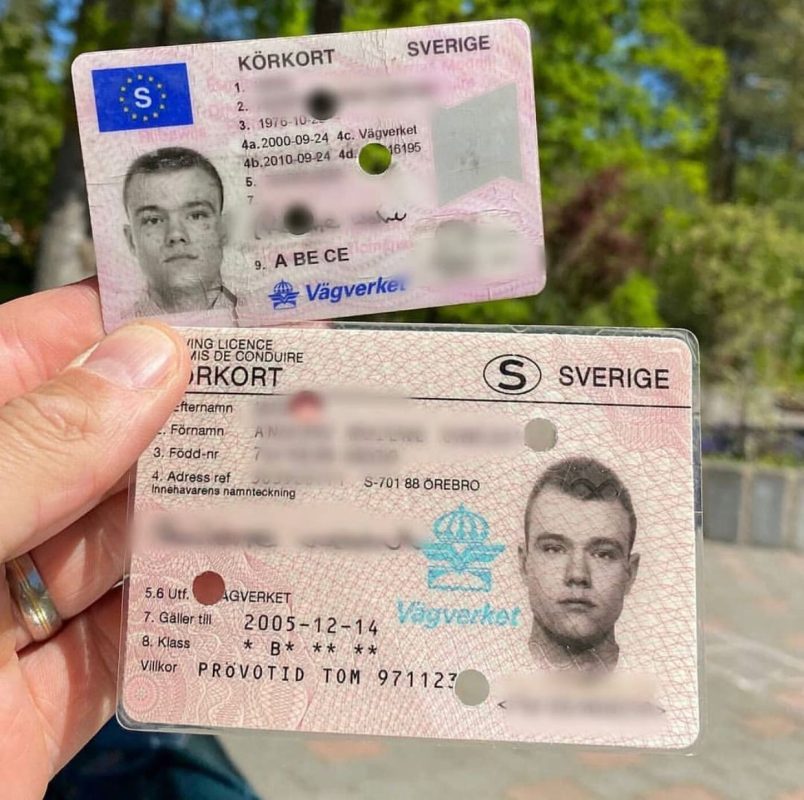Navigating the New Landscape of Driving License ID Handling in 2025
In every society, the driving license works as a crucial file, not simply as an evidence of the ability to operate a vehicle but also as an identification tool. As Körkort Online Test step into 2025, substantial changes have actually emerged relating to the handling and management of driving licenses, mostly influenced by advances in innovation, progressing guidelines, and the need for boosted security measures. This post aims to provide a detailed overview of driving license ID managing in 2025, elucidating the innovations included, the upcoming legal improvements, and providing answers to common inquiries.
The Transition to Digital Driving Licenses
Among the most noteworthy improvements in driving license ID handling is the prevalent adoption of digital driving licenses. These digital licenses are saved electronically on mobile phones, offering multiple conveniences to both motorists and authorities. In the United States, for circumstances, lots of states have actually begun carrying out digital motorist's licenses, while countries such as Canada and the UK are expected to do the same quickly.
Secret Benefits of Digital Driving Licenses
- Convenience: Easily available on mobile phones, eliminating the need to carry physical copies.
- Enhanced Security: Incorporating biometric functions and file encryption helps to fight identity theft and scams.
- Real-time Updates: Immediate updates to personal information, such as modifications in address or status, boost precision.
Difficulties and Concerns
Regardless of the advantages, the transition to digital licenses presents challenges, consisting of issues about personal privacy, cybersecurity risks, and the digital divide impacting those without access to mobile phones or the internet.
Changes in Regulatory Framework
As we head into 2025, numerous regulations surrounding driving licenses have actually come under examination and improvement. Federal governments and regulatory bodies are concentrating on guaranteeing that driving licenses are safe, legitimate, and released in compliance with established laws.
Secret Legislative Trends
- Standardized ID Formats: Countries are moving towards a standardized format for driving licenses to simplify recognition and enhance security.
- Increased Verification Procedures: Authorities are now utilizing advanced techniques such as facial acknowledgment and AI to boost confirmation procedures at checkpoints.
- Concentrate on Sustainability: With growing ecological issues, numerous states are choosing environmentally friendly materials for physical licenses and exploring robust digital alternatives.
- Age and Identity Verification: Enhanced measures are being put in location to accurately validate the age and identity of chauffeurs, particularly in contexts where age-related laws apply to driving.
The Global Perspective: State-By-State Comparison
| Nation | Digital License Implementation | Existing Regulations | Noteworthy Features |
|---|---|---|---|
| United States | A number of states in progress | Varies by state, efforts to unify formats | QR codes for easy recognition |
| Canada | In pilot stages | Standardized identification across provinces | Combination with health IDs |
| United Kingdom | Early adoption stage | Focus on online renewal and information updates | Digital verification by means of the app |
| Australia | Under consideration | Increasingly strict identification procedures | Focus on scams avoidance |
The Role of Technology in ID Handling
Innovation is reinventing how driving licenses are handled. Korkot Online , blockchain, and biometrics are ending up being important to driving license issuance and confirmation.
Developments Shaping the Future
- Expert system: AI algorithms are now utilized for acknowledging patterns in driving habits, which can inform insurance coverage premiums and legal implications.
- Blockchain Technology: Ensuring the stability and credibility of driving license information, blockchain technology permits for secure sharing of information in between authorities without worry of tampering.
- Biometrics: Increasingly, biometric systems are implemented at the point of issuance and verification, such as facial acknowledgment and fingerprint scanners, to make sure secure identity verification.
Prospective Impacts of Emerging Technologies
The application of these innovations can result in boosted dependability and security of driving IDs, but it raises questions about data personal privacy and user consent.
Often Asked Questions (FAQs)
1. What should I do if my digital driving license is lost or taken?
You need to instantly report the loss or theft to your regional automobile agency. Many digital licenses have built-in functions to disable gain access to from another location.
2. Are digital driving licenses accepted everywhere?
As of 2025, approval of digital licenses varies by region. It's encouraged to bring both digital and physical copies when taking a trip throughout state or national borders.
3. Can I update my details on a digital driving license?
Yes, updates can frequently be made through the associated mobile application or site of the releasing authority.
4. What are the security steps for digital licenses?
Digital licenses usually include functions such as encryption, two-factor authentication, and biometric verification to boost security.
5. How will conventional driving licenses be affected?
The move towards digital licenses may minimize the issuance of physical licenses, however they will still be offered for those unable to access digital options.
As we advance into a new age in 2025, the handling of driving licenses is enhancing to meet the demands of contemporary society. Through technological developments and regulative reforms, people can expect a more safe, effective, and structured process for getting and handling their driving licenses. Nevertheless, as digital solutions multiply, it stays necessary to address obstacles relating to personal privacy, security, and accessibility, ensuring fair road access for all drivers while safeguarding personal details. As federal governments around the world continue to adjust to these modifications, the future of driving license ID handling is set to be both dynamic and transformative.

